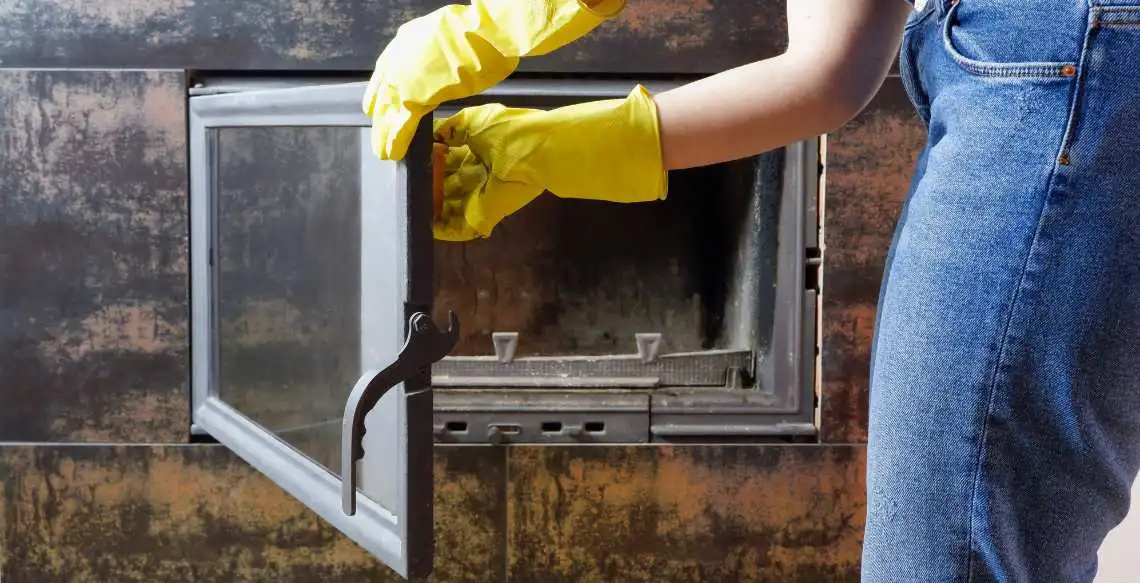Maintaining clean glass on your gas fireplace is crucial not only for aesthetic reasons but also for the efficient operation of your fireplace. A clear view of the flickering flames enhances the ambiance and warmth of your living space.
However, over time, the glass can become marred with soot, carbon deposits, and a white film, which can obscure the beauty of the fire and potentially impact the fireplace’s performance.
Understanding how to clean gas fireplace glass stains and addressing what causes white film on gas fireplace glass is vital to preserving the integrity and safety of your fireplace.
Regular cleaning not only ensures an unobstructed view but also contributes to the longevity of the glass and the overall health of your fireplace system.
This guide aims to provide practical strategies and solutions, from homemade gas fireplace glass cleaner recipes to the best commercial cleaner for gas fireplace glass, ensuring that your gas fireplace remains a cherished feature in your home.
Understanding the Composition of Gas Fireplace Glass
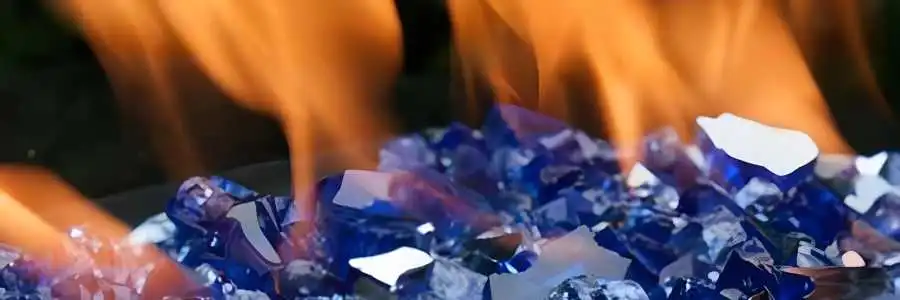
Gas fireplace glass is specifically engineered to withstand extreme temperatures, making it different from typical glass in windows or doors.
This high-temperature tolerance is due to the ceramic or tempered glass used in fireplace doors, designed to resist thermal shock and prevent breakage under heat stress.
The robust nature of this glass necessitates specific cleaning methods to avoid damage. Harsh chemicals or abrasive tools can scratch or weaken the glass, leading to potential safety hazards.
It’s essential to choose cleaning solutions that are effective yet gentle, such as a homemade gas fireplace glass cleaner or a commercially available best cleaner for gas fireplace glass formulated specifically for the unique properties of fireplace glass.
Understanding the glass’s composition helps select the appropriate cleaning techniques that won’t compromise its integrity.
Whether tackling how to clean gas fireplace glass with vinegar for routine maintenance or addressing more stubborn issues like cleaning gas fireplace glass stains, the right approach will ensure the glass remains clear and intact, offering a safe and beautiful view of your gas fireplace.
Safety Precautions Before Cleaning
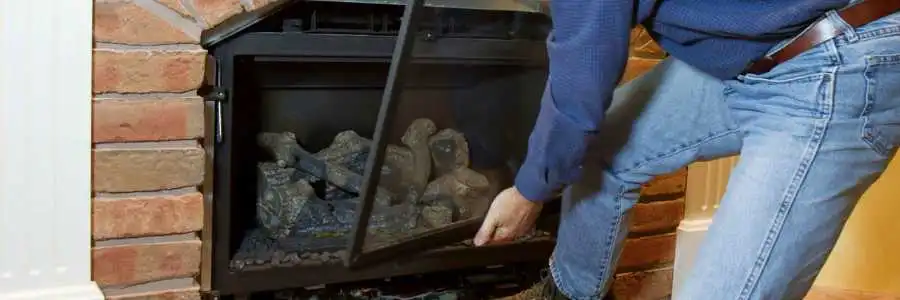
Before embarking on cleaning your gas fireplace glass, prioritizing safety is paramount. Ensure the fireplace is completely turned off and the glass is cool to the touch to prevent burns.
Disconnecting the gas supply adds an extra layer of safety, eliminating any risk of gas leakage. Protective gloves are advisable to protect your hands not only from the cleaning agents, which can be harsh on the skin but also from the sharp edges of the glass panel.
Safety goggles can also protect against accidental splashes of cleaning solutions. Working in a well-ventilated area is essential, especially when using homemade gas fireplace glass cleaner solutions like vinegar, which can emit strong odours.
These precautions are not just for personal safety but also to prevent any damage to the fireplace. When removing gas fireplace glass stains or attempting to clean fireplace glass with ash, being mindful of the materials and tools you use will ensure that the cleaning process is safe for you and your fireplace.
Gather Necessary Cleaning Supplies

Gathering the right supplies before you start is crucial to clean your gas fireplace glass effectively. You’ll need a soft, lint-free cloth or paper towels for wiping, a non-abrasive scrub pad for tackling tougher stains, and a suitable cleaning solution.
When it comes to choosing a cleaner, there are several options. A homemade gas fireplace glass cleaner made from vinegar and water is an eco-friendly and cost-effective solution.
Alternatively, for more stubborn stains, how to clean gas fireplace glass with baking soda provides a gentle yet abrasive action that can lift grime without scratching the glass.
Commercially available cleaners explicitly designed for fireplace glass, like Imperial gas fireplace glass cleaner, can also be effective, especially for removing the white film on gas fireplace glass, which is often caused by mineral deposits from the combustion process.
It’s important to avoid using products with ammonia or harsh chemicals, as these can damage the glass and the fireplace’s interior. Having the right supplies on hand makes cleaning smoother and ensures that you can effectively remove stains and buildup without damaging the glass.
Step 1: Preparing the Fireplace for Cleaning
The first step in cleaning your gas fireplace glass is to prepare the fireplace properly. This involves ensuring that the fireplace is completely relaxed and that no residual heat could pose a risk during cleaning.
If your fireplace has a removable glass front, carefully detach it according to the manufacturer’s instructions, which might involve loosening screws or clips. Place the glass on a flat, stable surface with a soft cloth to prevent scratches.
If the glass is not removable, ensure that you have clear access to the interior side of the glass. This preparation stage is crucial for a thorough clean, allowing you to address every inch of the glass, including the corners and edges where grime often accumulates.
For those tackling how to clean gas fireplace glass doors specifically, this preparation ensures that the door’s framework does not obstruct your cleaning efforts.
Proper preparation sets the stage for a successful cleaning process, ensuring that all areas of the glass are accessible and that you can work safely and efficiently.
Step 2: Removing Surface Debris and Buildup
Before applying any liquid cleaner, removing any loose debris from the glass surface is essential. A dry cloth or a soft brush can gently remove any surface dust, ash, or soot.
This initial step prevents scratching the glass when you start the wet cleaning. For fireplaces that have been used extensively, you might notice a layer of soot or a black film on fireplace glass; this is normal and can be lightly brushed off.
This stage is about preparing the glass for a deeper clean by removing particles that could create abrasions when scrubbing with a cleaning solution. It’s also an opportunity to inspect the glass for any signs of damage or wear that might need professional attention.
By ensuring the glass is free from loose debris, you set the foundation for more effective cleaning, making it easier to tackle the more stubborn stains and buildup in the subsequent steps.
Step 3: Choosing the Right Cleaning Solution
Selecting the appropriate cleaning solution is pivotal in effectively cleaning your gas fireplace glass without causing damage. For those seeking a natural gas approach, how to Clean Gas Fireplace Glass with vinegar presents a safe, eco-friendly option.
Vinegar’s acidic nature makes it excellent for dissolving the stubborn white film that can accumulate on fireplace glass, often resulting from mineral deposits in the gas.
Another DIY option is how to clean gas fireplace glass with baking soda, which, when made into a paste with water, acts as a mild abrasive suitable for scrubbing away tough stains without scratching the glass.
Commercial cleaners explicitly formulated for fireplace glass, like the Imperial gas fireplace glass cleaner, can be effective for more persistent or tough stains.
These products are designed to tackle the unique buildup found on gas fireplace glass, including soot, carbon deposits, and white film on gas fireplace glass.
When choosing a cleaner, avoiding products containing ammonia or harsh abrasives is essential, as these can damage the glass and the seals around the fireplace door.
Whether opting for a homemade gas fireplace glass cleaner or a commercial product, it’s crucial to read and follow the manufacturer’s instructions for the safest and most effective use.
Step 4: Applying the Cleaning Solution to the Glass
After choosing your cleaning solution:
- Apply it gently to the fireplace glass. If using a homemade gas fireplace glass cleaner like a vinegar solution, spray or dab it onto the glass, avoiding over-saturation, which can lead to drips and streaks.
- For those using baking soda, apply the paste directly onto the stained areas, allowing it to sit for a few minutes to loosen the grime.
- When using commercial cleaners, such as the best cleaner for gas fireplace glass, follow the product’s instructions, typically spraying the cleaner onto the glass or a cloth before wiping.
This step is crucial for addressing specific concerns, such as how to clean gas fireplace glass stains effectively without causing damage to the glass or the fireplace’s interior.
The application method can influence the cleaning’s effectiveness, with direct application to stains often yielding the best results for tough grime.
However, for overall cleaning, a sprayed or wiped application ensures an even distribution of the cleaning solution, facilitating a thorough and efficient cleaning process. Patience during this step can enhance the cleaner’s effectiveness, especially for stubborn stains or buildup.
Step 5: Scrubbing and Removing Stubborn Stains
With the cleaning solution applied, the next step involves scrubbing the glass to remove stubborn stains. Using a soft, non-abrasive scrub pad, gently work the cleaner into the glass in a circular motion, paying extra attention to areas with significant buildup.
For those using a homemade gas fireplace glass cleaner like a baking soda paste, the gentle abrasive quality of the baking soda can help lift stubborn stains without scratching the glass surface.
When tackling how to clean gas fireplace glass with vinegar, the acidic nature of the vinegar helps break down the grime, making it easier to scrub away. It’s particularly effective for removing the white film on gas fireplace glass, often due to mineral deposits from combustion.
For extremely stubborn stains, such as a thick black film on fireplace glass, allowing the cleaning solution to sit longer before scrubbing can help loosen the buildup, making it easier to remove.
Apply only gentle pressure throughout this process to avoid damaging the glass. Regular checks while scrubbing can help you assess the progress and determine if additional applications of the cleaner or more scrubbing are needed.
Step 6: Rinsing and Drying the Glass Surface
With the scrubbing complete, it’s time to rinse the gas fireplace glass to remove any remaining cleaning solution and residue. Using a clean, damp cloth or sponge, carefully wipe the glass surface to remove traces of the cleaning solution, ensuring thorough rinsing.
Be sure to rinse the cloth or sponge frequently to prevent spreading dirt or residue back onto the glass. Once the glass has been thoroughly rinsed, use a dry, lint-free cloth or towel to dry the surface carefully, removing any remaining moisture or streaks.
Be sure to work methodically, starting from one corner of the glass and gradually moving across its entire surface to ensure thorough drying. By rinsing and drying the glass properly, you can remove any remaining cleaning solution and residue and achieve a sparkling clean finish.
Step 7: Polishing the Glass for a Sparkling Finish
With the gas fireplace glass clean and dry, it’s time to add the finishing touches by polishing the glass to restore its clarity and shine.
Using a clean, dry microfiber cloth or newspaper, gently buff the glass surface in circular motions to remove any remaining streaks or smudges. Be sure to work methodically, starting from one corner of the glass and gradually moving across its entire surface to ensure thorough polishing.
Additionally, be sure to use a dry cloth or newspaper to prevent leaving behind lint or moisture that may detract from the glass’s appearance.
By polishing the glass properly, you can achieve a crystal-clear finish and enjoy an unobstructed view of the mesmerizing flames in your gas fireplace. Incorporating Gas Fireplace Ideas into your design can further enhance the ambience and aesthetics of your living space.
Tips for Preventing Future Buildup

To maintain the cleanliness and clarity of your gas fireplace glass, it’s essential to implement preventative measures to minimize future buildup of soot, stains, and residue.
One effective strategy is to clean the glass regularly, ideally after every use, to prevent dirt and grime from accumulating and becoming more challenging to remove.
Additionally, ensuring proper ventilation in the fireplace area can help minimize the formation of soot and residue by allowing for better airflow and combustion of gases.
Using high-quality fuel sources and avoiding burning materials that produce excessive smoke or residue can also help reduce buildup on the glass surface.
By incorporating these preventative measures into your fireplace maintenance routine, you can prolong the intervals between cleanings and keep your gas fireplace glass looking clean and clear for years.
Troubleshooting Common Cleaning Challenges
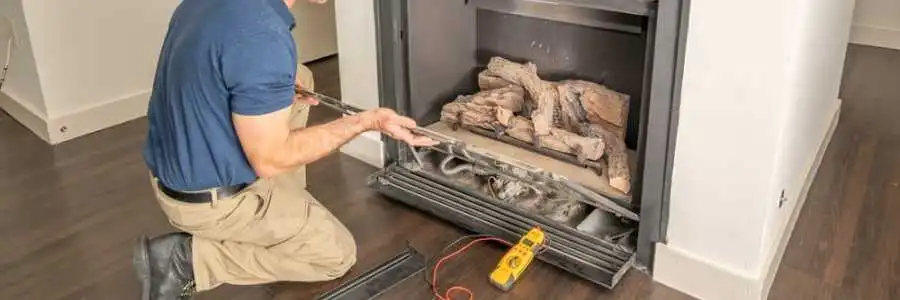
Despite your best efforts, you may encounter stubborn stains, residue, or other cleaning challenges when cleaning your gas fireplace glass. Fortunately, you can try several troubleshooting techniques to address these issues effectively.
For persistent stains or residues, consider using a specialized glass cleaner formulated explicitly for gas fireplace glass, as these products are designed to tackle tough stains without damaging the glass surface.
Alternatively, you may opt for alternative cleaning methods, such as baking soda, water paste, or vinegar to dissolve mineral deposits. Be sure to test any new cleaning products or processes on a small, inconspicuous glass area first to ensure they are safe and effective.
Additionally, if you encounter any difficulties or are unsure how to proceed, feel free to seek advice from a professional fireplace technician or glass cleaner.
With the right approach and techniques, you can overcome common cleaning challenges and restore the clarity and shine of your gas fireplace glass.
Alternative Cleaning Methods and Solutions
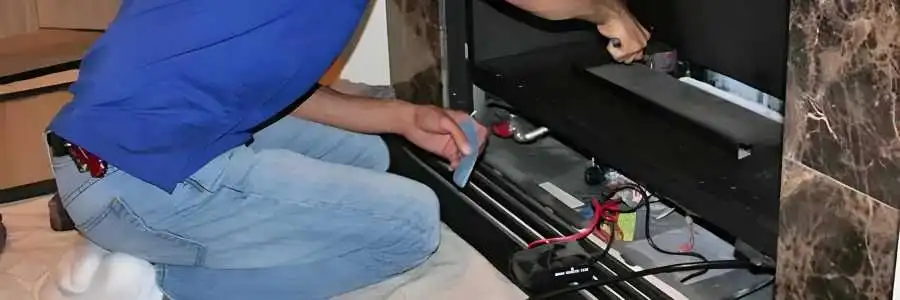
In addition to traditional cleaning methods and solutions, you can try several alternative approaches to effectively clean your gas fireplace glass.
One popular alternative is to use ash from your fireplace as a mild abrasive cleaner to remove stubborn stains and residue from the glass surface.
Simply dip a damp cloth or sponge into the fireplace ash and gently scrub the glass in circular motions, focusing on areas with visible stains or buildup.
The abrasive nature of the ash helps to loosen dirt and grime without scratching or damaging the glass, making it an effective and eco-friendly cleaning solution.
Additionally, some homeowners have successfully used specialized cleaning tools or accessories, such as magnetic cleaners or razor scrapers, to remove stubborn stains and residue from gas fireplace glass.
These tools are designed to safely and effectively remove dirt and grime from the glass surface without scratching or damaging it, providing a convenient alternative for tackling tough cleaning jobs.
By exploring alternative cleaning methods and solutions, you can find the best approach for you and achieve a clean and clear finish on your gas fireplace glass.
Conclusion:
In conclusion, maintaining clean glass on your gas fireplace is not just about aesthetics—it’s essential for safety, efficiency, and the overall enjoyment of your fireplace experience.
By following the steps outlined in this guide and utilizing the appropriate cleaning methods and solutions, you can ensure that your gas fireplace glass remains crystal clear, providing an unobstructed view of the mesmerizing flames within.
From understanding the composition of gas fireplace glass to taking safety precautions before cleaning, each aspect plays a crucial role in achieving optimal results.
Whether you opt for a homemade gas fireplace glass cleaner using vinegar or baking soda, or you prefer a commercial product like Imperial gas fireplace glass cleaner, the key is to choose a solution that effectively removes stains and buildup without damaging the glass or the fireplace.
By incorporating regular maintenance into your fireplace care routine and implementing preventive measures to minimize future buildup, you can prolong the lifespan of your gas fireplace glass and ensure its continued performance and visual appeal.
So, embrace the warmth and ambience of your gas fireplace with confidence, knowing that with proper care and attention, you can enjoy a clear view and a cozy atmosphere for years to come.
Here’s to many delightful evenings spent gathered around your beautifully maintained gas fireplace, creating cherished memories with family and friends amidst the dancing flames

